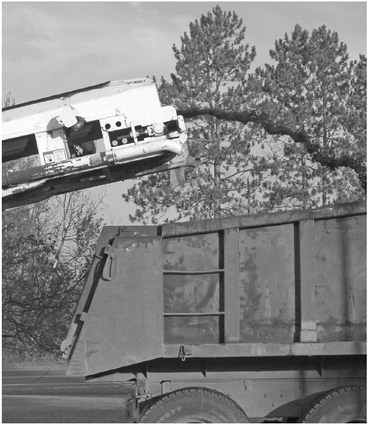Historical Society shares insights on Indian Farms sites


On Thursday, September 23, the Taylor County Historical Society sponsored a talk by Cindi Stiles about new information on the Big and Little Indian Farms site in the Perkinstown area. The two villages are located on the Chequamegon-Nicolet National Forest lands. The project is funded by the Chequamegon-Nicolet National Forest with supervision by their Heritage Resources Management Program.
The foundation of this research is the work begun by the Forest Service in the 1970s-1980s. Partners in this early effort included the Taylor County Historical Society, the Taylor County Community Education Center, the Barron County Historical Society and numerous local citizens in the Medford, Westboro and Perkinstown communities. This effort resulted in the Big Indian Farms being listed on the National Register of Historic Places (NRHP) in 1988.
In 2007, the property containing Little Indian Farms was added to the Forest Service land holdings. In 2020, Cindi Stiles was hired to compile information that had surfaced since the 1980s for a new NRHP nomination to include both the Big and Little Indian Farms. Again, this project has included the Taylor County Historical Society and numerous local citizens.
Big and Little Indian Farms were two mix-tribe villages located about a half a mile from each other and connected by marriage and tradition. Big Indian Farms was composed primarily of Prairie Potawatomi Band members who had been removed from Wisconsin and Illinois and resettled by the government in Kansas. Some band members led by John Young decided to return to their ancestral lands in Wisconsin. Little Indian Farms was composed of Ojibwe band members from several reservations in northern Wisconsin. Led by Paul Whitefi sh, they also decided to return to their traditional lifestyle in their ancestral lands. Both groups were joined periodically by members of the other Wisconsin tribes for ceremonies during the period of 1886 through 1908 when the villages were inhabited.
The approach taken in the current project starts with the assumption that the inhabitants of both villages were familiar with the landscape and chose this area based on the known resources available. A centuries old trail between Black River Falls and Rhinelander, linking the major Ojibwe villages with the Mississippi River and Wisconsin River through northern waterways and portages, ran on the south end of the villages. Another trail close to the villages led north to Lake Superior. Linked by walking trails or wagon trains, the Farms inhabitants could access maple sugar stands, wild rice streams and lakes, numerous springs and various habitats for deer, fish and other plants and animals. Trade with the local settlers was common as well: wild foods, leather goods and beadwork for dairy products and other supplies.
The next step in this project is working with the oral history programs of the Wisconsin tribes to gather stories of what life was like in the villages, who were the families living there, where they came from, and where they went after the villages disbanded. In addition, information from the residents of the surrounding communities and their interactions with the villages is also being collected.
Anyone who would like to share stories or pictures about this historic time in Taylor County history, please contact the Taylor County Historical Society at 715-748-3808 or email: tchistoricalsociety@ gmail.com

Laurie Peterson of Rural Mutual Insurance on Tuesday presented Huey’s Hideaway with a donation of $1,000. “Through the dedication of its employees and the Board of Directors, Huey’s continues to change, grow and improve. This is a true treasure to have in our small community, be sure to check it out,” Peterson said. Pictured are (l to r.): board member John Lange, director Monica Halopka, Peterson and Huey’s board chairman Billie Hartwig.SUBMITTED


